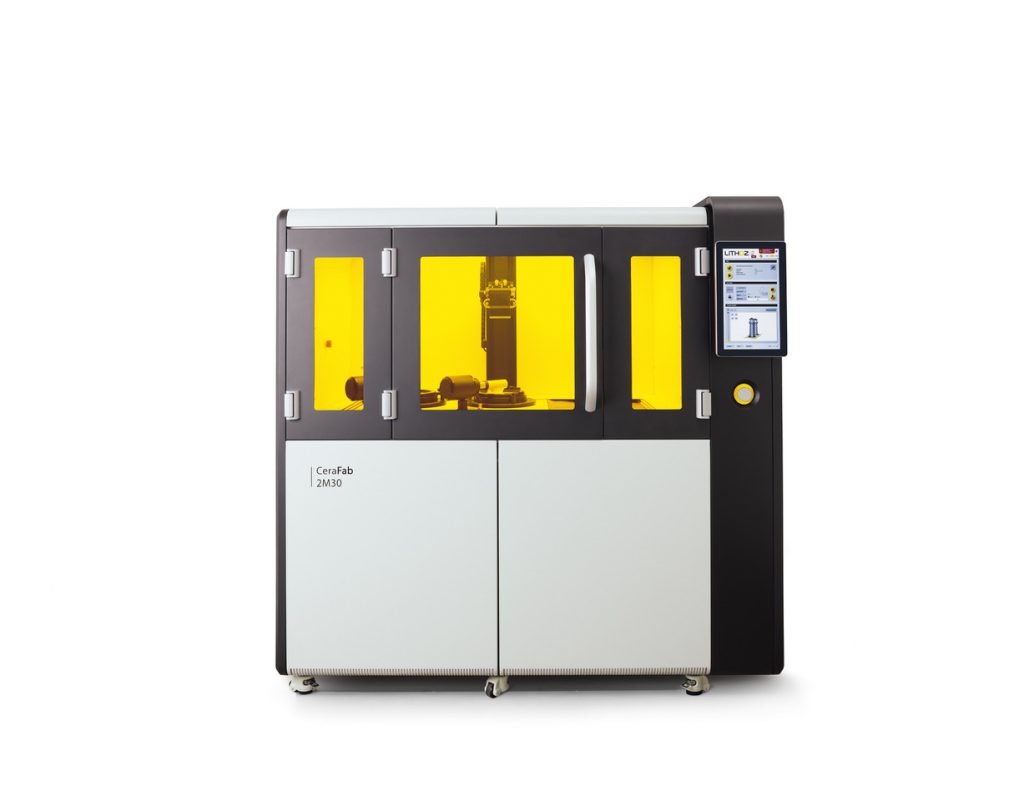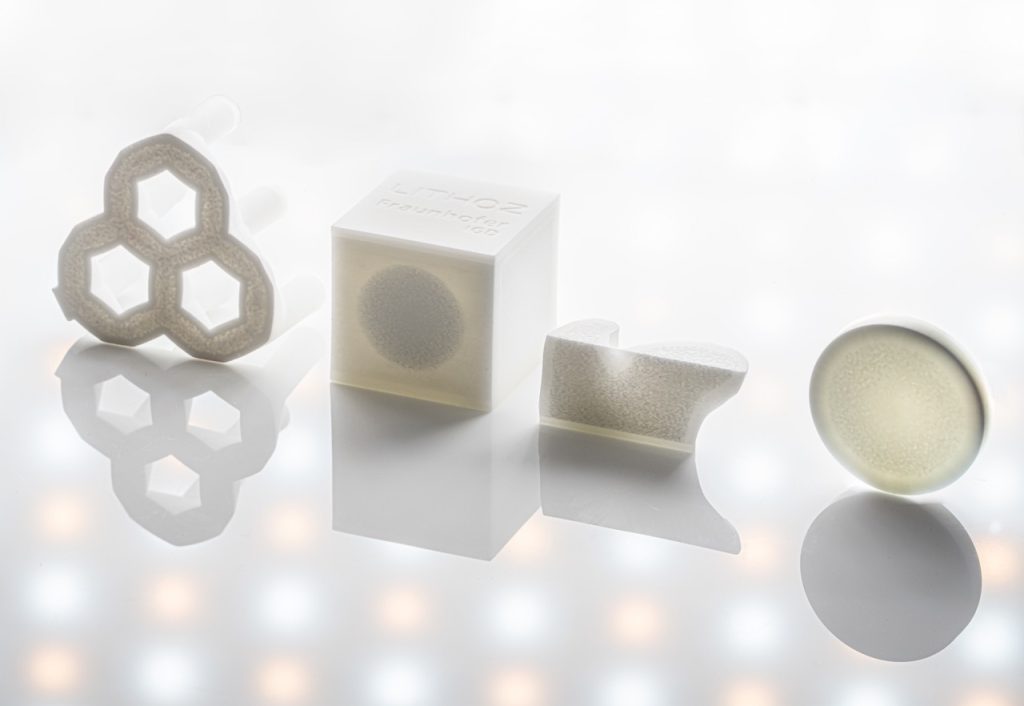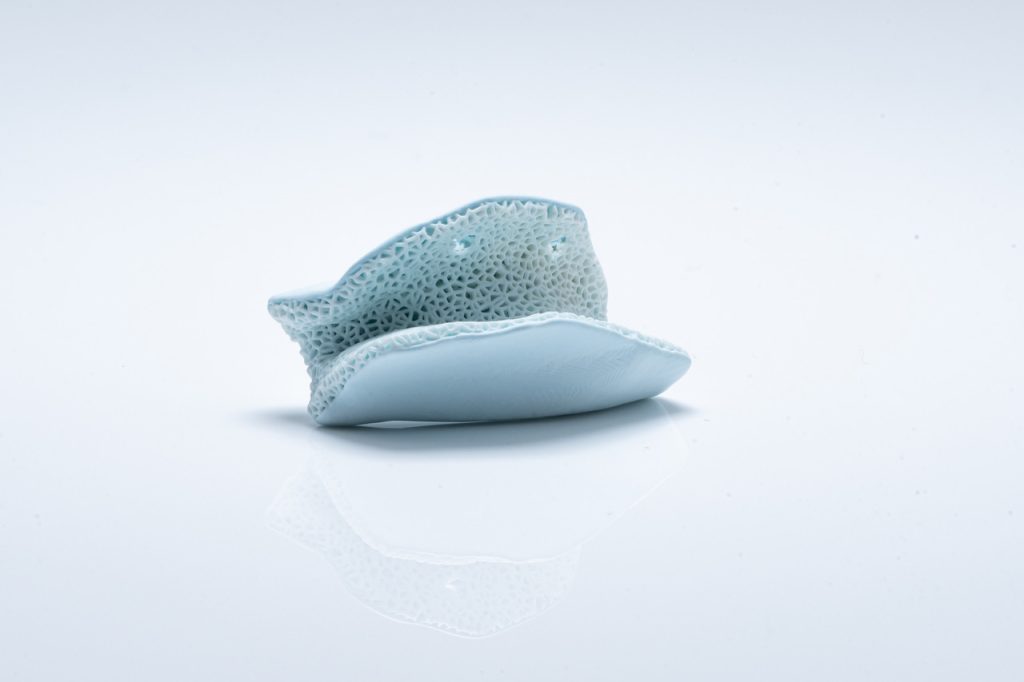Austrian ceramic 3D printing specialist Lithoz will present its latest innovations in multi-material 3D printing at Formnext 2023.
In Frankfurt, the company is presenting its revolutionary multi-material 3D printer CeraFab Multi 2M30 LCM in a world trade fair premiere. This is presented alongside a variety of multi-material 3D printed parts.
The CeraFab Multi 2M30 can 3D print two different materials within a single layer. This enables the production of highly complex multifunctional parts by combining ceramics with metals or fusing two ceramic materials with different properties. During Formnext, these multi-material parts will be available for visitors to touch and examine, enabling a close-up “touch and feel” experience.
The company will also introduce the Ceramic AM Factory. Lithoz has a network of experienced contract manufacturers already using LCM technology in series production and is presenting an impressive range of new series production parts manufactured by Bosch Advanced Ceramics, Steinbach and SiNAPTIC and printed on Lithoz CeraFab System printers
Additionally, due to the overwhelming interest in 3D printed healthcare applications using technical ceramics, Lithoz will be showcasing a wide range of innovative 3D printed ceramic parts for medical and dental applications at last year’s Formnext. These pieces include a range of natural-looking disilicate dental restorations. In addition, Lithoz will present a special exhibition of bioabsorbable ceramics such as hydroxyapatite, tricalcium phosphate and multi-material medical parts that combine the two. These components will demonstrate how ceramics and breakthrough 3D printing technology can be combined to increase surgical precision and patient well-being.
 Multi-material parts 3D printed with the Lithoz CeraFab Multi 2M30 LCM 3D printer. Image via Lithoz.
Multi-material parts 3D printed with the Lithoz CeraFab Multi 2M30 LCM 3D printer. Image via Lithoz.
Multi-material 3D printing with the CeraFab Multi 2M30
Formnext 2023 will be the first trade fair appearance of the CeraFab Multi 2M30 on the world stage following its launch in 2020.
This powerful LCM 3D printer can 3D print two materials simultaneously in a single layer. This allows for changes in the composition of a part and enables the production of customizable, functionally graded structures that would otherwise be impossible to produce.
Contrasting materials can be combined flexibly and functionally into a single 3D printed part, even ceramic with metal. This allows the fabrication of ceramic-metal components with contrasting properties, including alternating conductivity and insulation between layers. Even parts with an otherwise unattainable level of detail and complexity can be 3D printed.
 The Lithoz CeraFab 2M30. Image via Lithoz.
The Lithoz CeraFab 2M30. Image via Lithoz.
With the opening of the “Ceramic AM Factory”, Lithoz will also present an impressive selection of new parts for series production at Formnext 2023. Here, parts manufactured by Bosch Advanced Ceramics, Steinbach and SiNAPTIC using the company’s LCM technology can be viewed in an up-close, “touch and feel” environment.
This showcase will highlight the success of the company’s LCM technology as a scalable solution for industrial mass production of precisely reproducible and highly detailed high-performance ceramic parts. Lithoz experts will also be on site in Frankfurt to provide additional information and insights into this wide range of scalable components.
 Using high-performance Lithoz multi-material 3D printing, Fraunhofer IGD produced these functionally graded ceramic parts with different porosities. Image via Lithoz.
Using high-performance Lithoz multi-material 3D printing, Fraunhofer IGD produced these functionally graded ceramic parts with different porosities. Image via Lithoz.
Next-generation multi-material 3D printing for medical applications
There was a lot of interest in 3D printed healthcare applications using high-performance bioceramics at Formnext 2022. To address this growing area of interest, Lithoz will be showcasing a wide range of natural-looking lithium disilicate dental restorative components and bioresorbable hydroxyapatite ceramic implants this year.
An innovative application that impressively underlines the potential of the CeraFab Multi 2M30 in the medical industry is the production of multi-material jaw abutment components. This novel application was developed as part of the EU-funded INKPlant project and will be presented by Lithoz for the first time at Formnext 2023.
Atrophy, i.e. a lack of bone volume, of the jaw is the long-term consequence of tooth loss. This bone loss also prevents the replacement of these teeth with the current gold standard – dental implants – and requires surgical intervention to increase the volume of local bone either through harvested bone grafts or other materials.
One promising approach is treatment with 3D-printed, bioabsorbable, patient-specific implants made of multiple materials. These parts are manufactured in such a way that they integrate perfectly into the patient’s anatomy. The aim of the INKPlant project is to develop this new treatment approach by combining the best properties of two established bioabsorbable augmentation materials in a customized 3D printed implant: tricalcium phosphate and hydroxyapatite.
Due to its faster resorption time, tricalcium phosphate promotes rapid ingrowth and development of the jawbone. The hydroxyapatite shell ensures the mechanical and volume stability of the implant during healing and replaces the membrane as a barrier against premature soft tissue ingrowth that would prevent bone formation. It was only Lithoz’s multi-material printing that made this combination of materials possible in one part. This implant is designed to provide predictable results and ensure a faster surgical procedure with less pain and swelling, benefiting the patient.
 CeraFab Multi from Lithoz can create innovative healthcare applications, such as this multi-material jaw augmentation part made from two different bioabsorbable ceramics with different porosities. Image via Lithoz.
CeraFab Multi from Lithoz can create innovative healthcare applications, such as this multi-material jaw augmentation part made from two different bioabsorbable ceramics with different porosities. Image via Lithoz.
Would you like to find out more? Visit Lithoz at stand D48, Hall 11.1, during Formnext 2023.
Subscribe to the 3D Printing Industry newsletter to stay up to date with the latest 3D printing news. You can also follow us on Twitter, like our Facebook page and subscribe to the 3D Printing Industry YouTube channel to access more exclusive content.
Are you interested in working in the additive manufacturing industry? Visit 3D Printing Jobs to view a selection of available positions and boost your career.
The image shows innovative copper and glass ceramic components 3D printed using the Lithoz CeraFab Multi 2M30, which can combine ceramics with metals in a single part. Photo via Lithoz.










